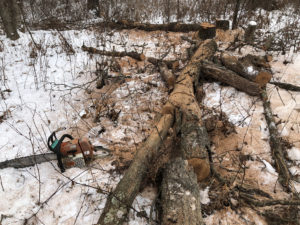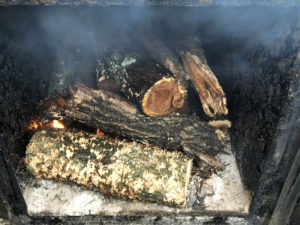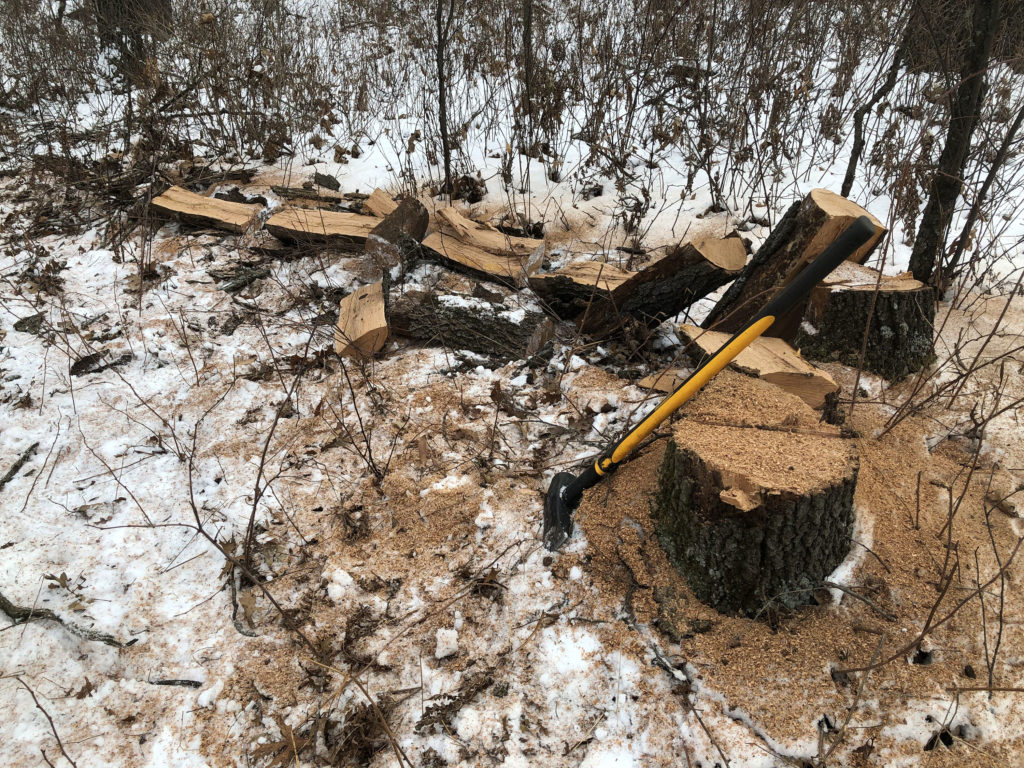The woodpile woes
The airwaves are always bombarded with commercials touting the latest and greatest pharmaceutical offerings, but I have one malady for which no drug can cure.
You never know when it’s going to strike. I’ll be driving down the road watching the scenery and bam! I am instantly overcome with jealousy and covetousness and almost a feeling of resentment toward someone I’ve probably never met.
I confess that I have woodpile envy. And I’m particularly attracted to very large woodpiles, no doubt because I’m ashamed at the size of my own. It seems that no matter what I do, my cordwood simply doesn’t cut it.
 It’s not that I don’t work at it. Every year over the holidays I find a little time to cut firewood and think optimistically that I’ve put away enough wood until next year.
It’s not that I don’t work at it. Every year over the holidays I find a little time to cut firewood and think optimistically that I’ve put away enough wood until next year.
Since there are only a few days left of the current year, it’s the only time I can say that with truthfulness. The chances of me cutting a full heating season of wood a year in advance are the same as swine developing winged flight or Lucifer strapping on a pair of ice skates. It’s not going to happen.
The problem was compounded in the old days when my parents heated with a couple of wood stoves in the house, including the original Franklin stove that dated to 1971. It held about four logs, burned hot for about three hours and would not hold a fire overnight.
Seasoned firewood should have had at least a summer of heat to dry, preferably a year. But I remember — not with fondness — breaking through waist-deep snow looking for dead trees to cut with hopes that it would be dry enough to burn right away.
The indoor heating improved when my parents upgraded to a bigger model, but the quest for dry wood was always a challenge. A major improvement occurred in the 1990s when they installed a wood-fired outdoor boiler which heats water and is piped into the house. All of the fire risk and mess stays outside.
They are also the perfect stove for woodcutting procrastinators, as it burns any sort of wood, wet, dry, old, ugly … if it fits in the stove, it burns.
Before we moved to the farm Dad bought an even bigger boiler and extended a water line to heat our house. The stove holds 1,000 gallons of water and has a firebox that is 4 feet long, 28 inches high and 32 inches wide. Not only does it heat two houses, but also keeps the milkhouse in the old dairy barn heated.
The stove is a firewood nympho, always hungry for more. I’ve never really figured out how much, only that it’s at least 1.5 pickup loads a week — more when it’s bitterly cold and less during the shoulder seasons.
But just how much does it need? Let’s do the math.
The average wood burning season is about six months — every day from November through March and at least half of October and April. The woodstove requires at least three fills a day during the colder months.
 The math tells us that firebox holds about 25 cubic feet. No one ever stuffs the firebox completely full. So accounting for air space and ash buildup, let’s say it gets half full thrice daily — 12.5 cubic feet each time. That’s 37.5 cubic feet of wood each day.
The math tells us that firebox holds about 25 cubic feet. No one ever stuffs the firebox completely full. So accounting for air space and ash buildup, let’s say it gets half full thrice daily — 12.5 cubic feet each time. That’s 37.5 cubic feet of wood each day.
A cord is the standard measurement for a pile of wood. A cord is 4 feet high, 4 feet wide and 8 feet long or 128 cubic feet. (4 x 4 x 8). If I’m burning 37.5 cubic feet of wood each day, a cord of wood will last 3.41 days from November through March. That’s 35 cords of wood to get through those months.
Take another 30 days (half of October and April) with only two firebox loads per day — 25 cubic feet. That’s another 750 cubic feet or about 6 cords. And many years I’m having to burn wood into May.
So conservatively, I need 41 cords or 5,248 cubic feet of wood just to get through the heating season. It’s hard to achieve, much less maintain, a large woodpile when the demand is so great. Dealing with woodpile dysfunction is difficult. I’m happy when it lasts longer than four hours.
But at least for the moment I can say I have enough wood to last until 2019.


